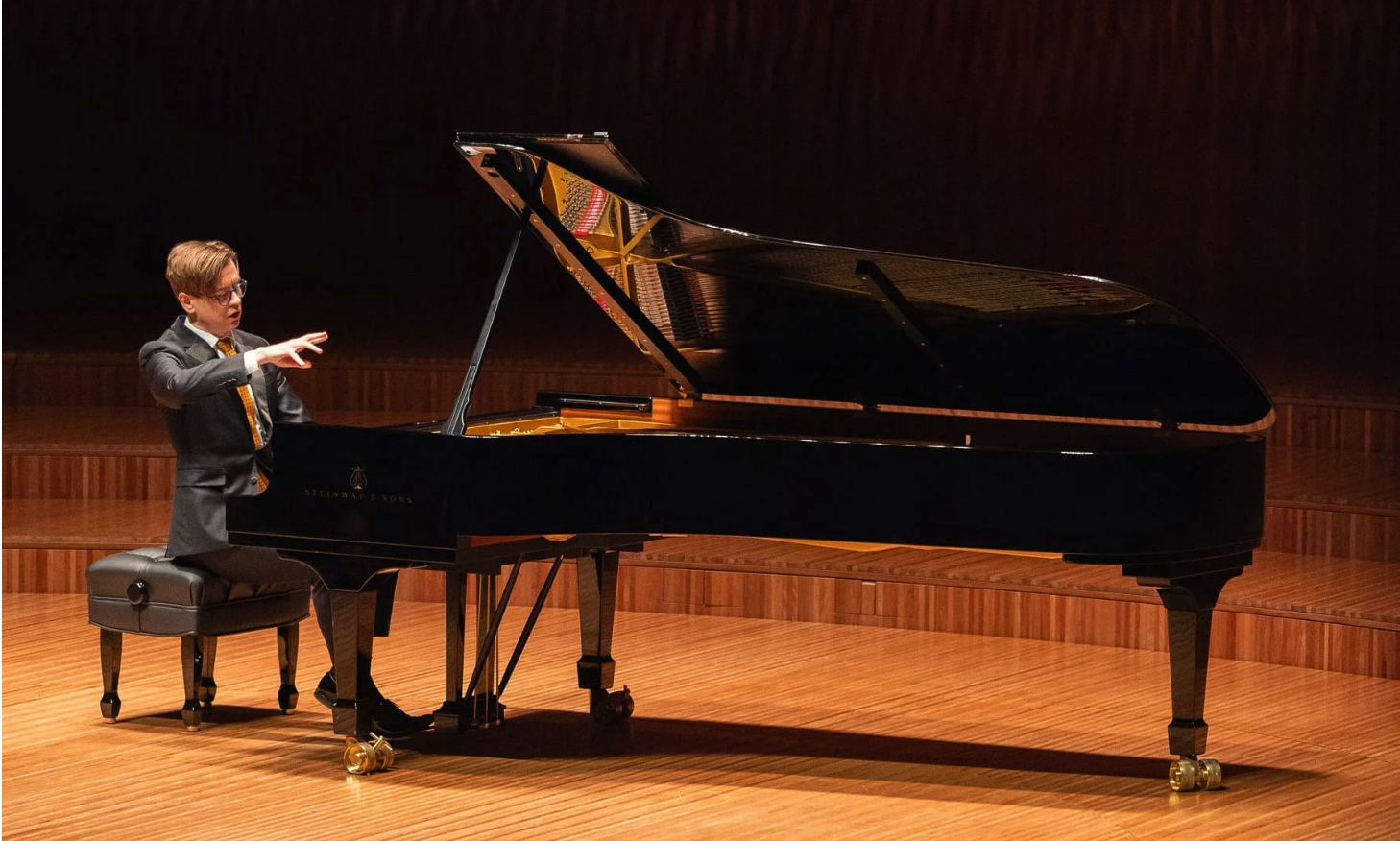The Goldberg Variations were Bach’s “letter to the future”. So says Víkingur Ólafsson at the end of his tour de force of this timeless masterpiece.
Much like his Die Kunst der Fuge (another ‘letter’ to posterity, although one which was more self-consciously backward-looking) the variations were composed at a time when Bach and his music were falling out of fashion. Of the great composer’s life there are two main sources, both necessarily inadequate – the Nekrolog and Forkel’s biography. It was in the latter that CPE Bach has us believe that the variations were commissioned by the then Ambassador to Prussia, an insomniac who requested a set of keyboard pieces that would put him to sleep. It is hard to believe that this was true. The variations are so evocative, busy, and often mercurial, that they command attention.
The structure of the variations is deceptively simple – an aria, with 30 variations, rounded off neatly by the same aria, da capo. Discerning listeners would realise that every third variation is a canon, each at an interval bearing the canon’s numerical order in the sequence, sometimes inverted, but always strict (almost – we must suffer Bach some artistic license in the 6th). They are variations because they are all ‘grounded’ on the same bass line that is introduced in the aria. The word ‘grounded’ is apt, because this design reflects an English tradition of ‘Grounds’ popularised by Purcell (and indeed the same ground is used in one of Purcell’s keyboard pieces).
Ólafsson’s performance of the aria is entirely conventional – original ornamentation, and no Gouldian descending arpeggios. He gave noticeable prominence to the bassline, to set the scene for the 30 ‘pieces’ that follow. The nature of the first variation lends itself to a stark and abrupt contrast with the aria. Ólafsson seized upon this. He brings to the work an immediacy, and the variation is played at breakneck speed. There was at times too much sustain, which softened the inherent punchiness of this jazz-like variation and produced an impressionistic swash of melodies. There was admirable articulation in the second, but too much unrelenting force. Much the same could be said of the eleventh; there is not much use of dynamic contrast or the relief of a dramatic pause.
Ólafsson has a delightful habit of holding onto the final note of each variation (almost always G) to meld into the next variation. When he does not do this, he begins almost immediately with the next variation – a continuity which could be seen especially in the final ten variations. The impression is given of a set that is more than the sum of its parts.
Ólafsson has a remarkable sense of individuation within each hand – it is as though each finger has a character of its own. This was clearest in variations 8 and 9. But it is a shame that it was not brought out more, for example, in the sixth (although he gave us a tantalising shift in metre there). The fifteenth is the fulcrum of the variations. It is an expressive and ponderous variation, but it was here played as though it were a tombeau.
There is a streak of Gould in Ólafsson. The provocateur in him came out in the sixteenth variation, which did not seize upon the grand French overture setting but instead builds up to a climax half-way in. The seventeenth was treated as though it were a Czerny exercise and we see again an unrelenting use of force. The result was an indistinguishable mass of notes. That is not to say that the performance was unimpressive – the wavering passages in variation 28 were played so fast they were unnoticeable.
Some favourites were the 18th, 24th and 25th. In all three, the rendition was thoughtful and never too busy and reminds one that the task of a Bach interpreter is to lighten the burden; to penetrate the mystery. That could be seen in the 24th, which was played at a delightful dance-like tempo, and with very clear articulation of the canonic repetition. The 25th is a remarkably Romantic piece and is steeped in the stil galant. The conclusion avoided the deliberate G-F# dissonant clash. But that was a false conclusion. Ólafsson did a double repeat of this variation, to induce something of a trance.
Ólafsson gave a triumphant rendering of the quodlibet. After an hour of technical prowess, it was a well-earned triumph. The articulation was so good that I heard contrapuntal passages I had never noticed before, in the B-section. It is often forgotten that on top of the bassline is not just one but two North German folk tunes – the other being what sounds like a fragment of Mein junges Leben hat ein End, a theme which also inspired Sweelinck’s penchant for the art of variation more than a century before Bach put quill to paper.
